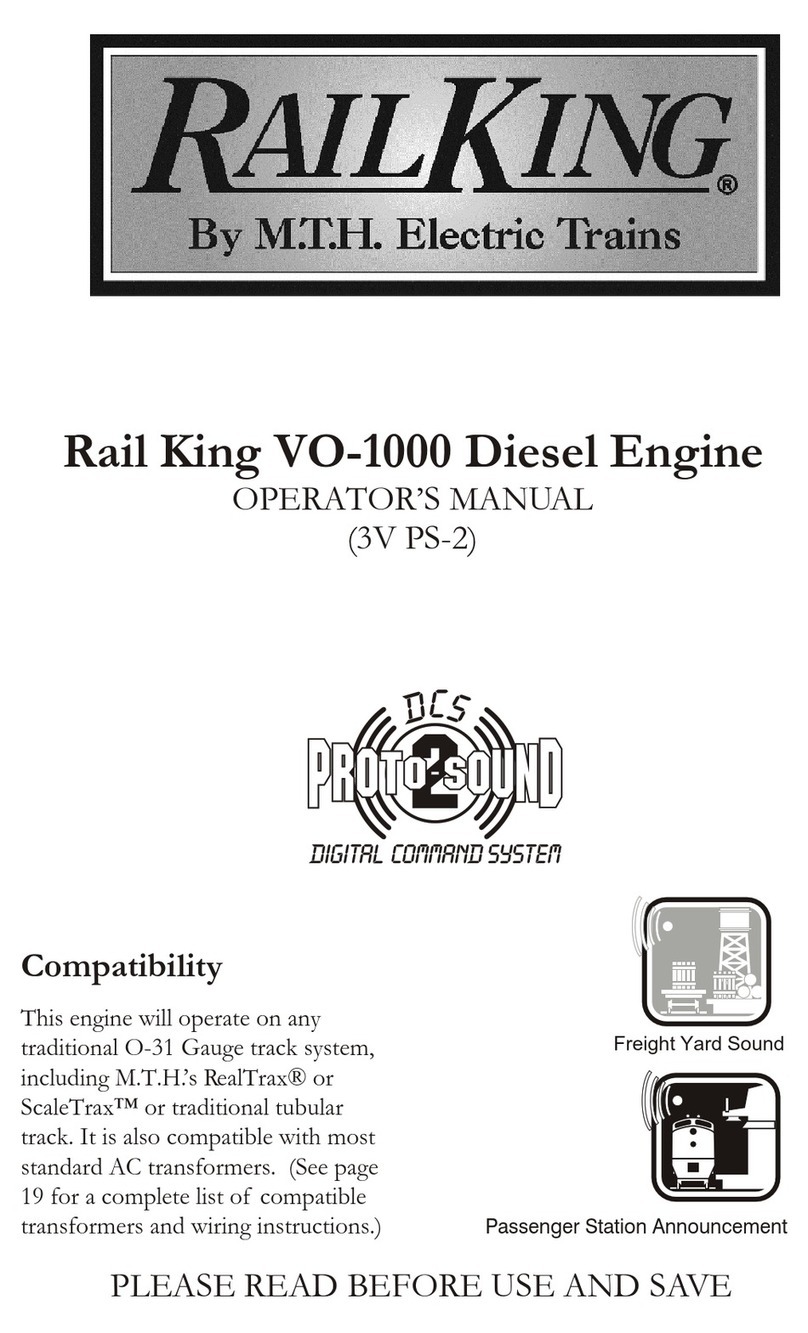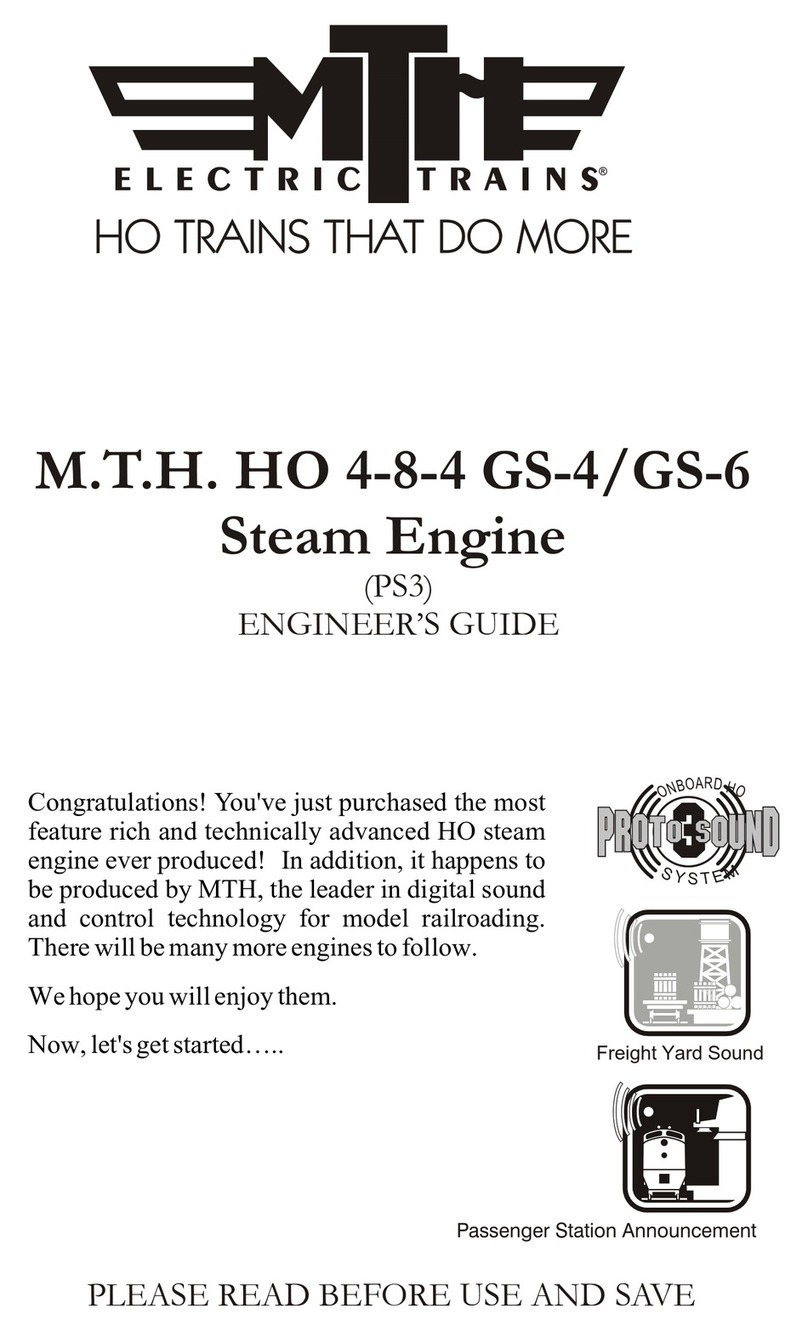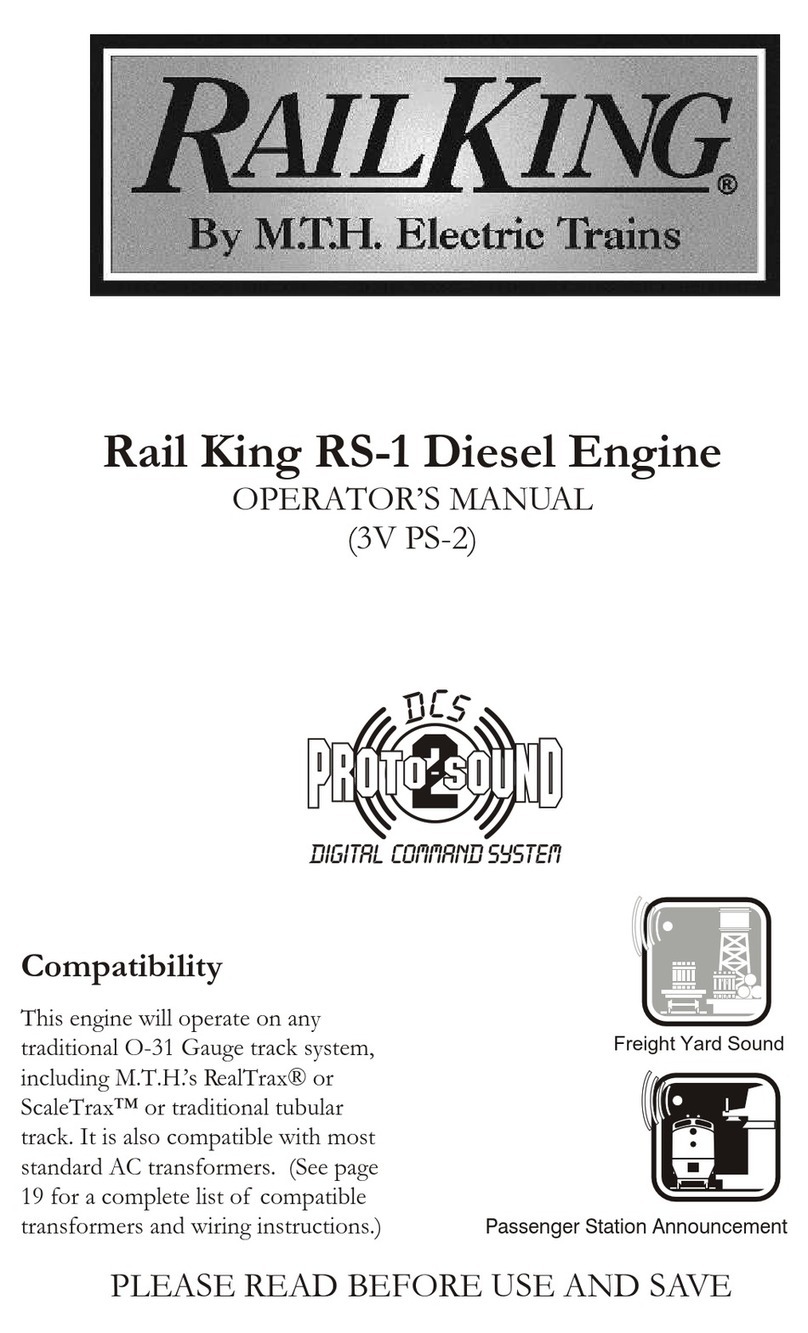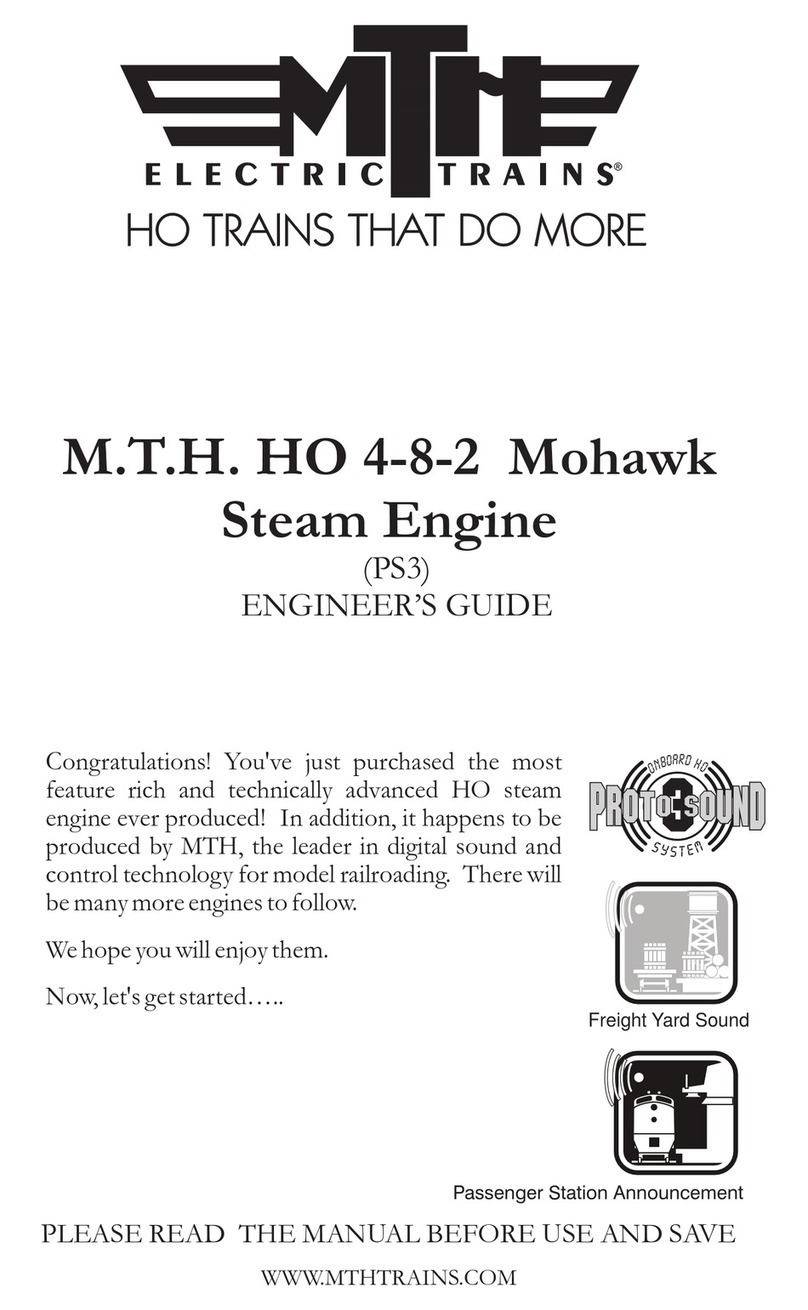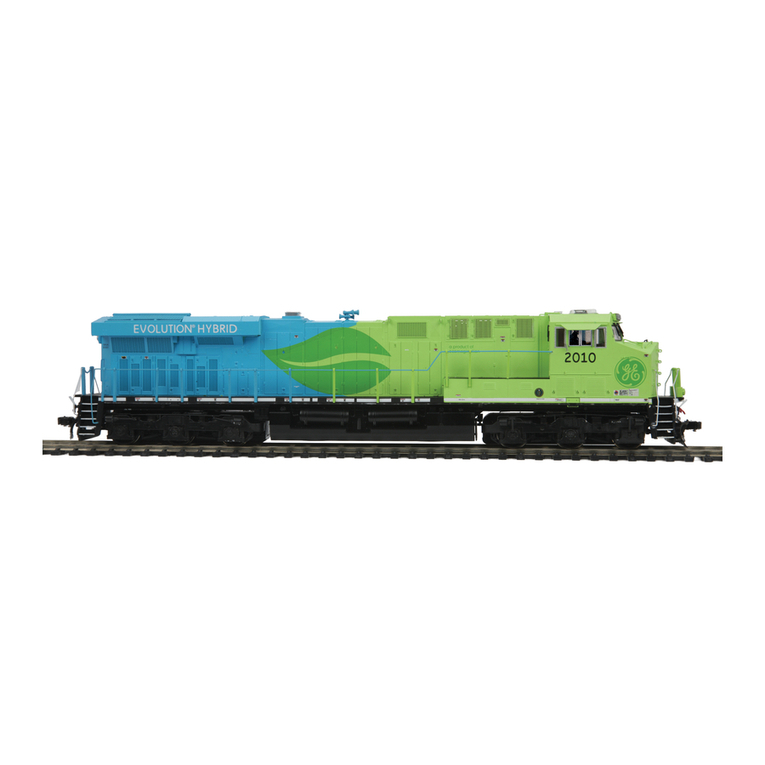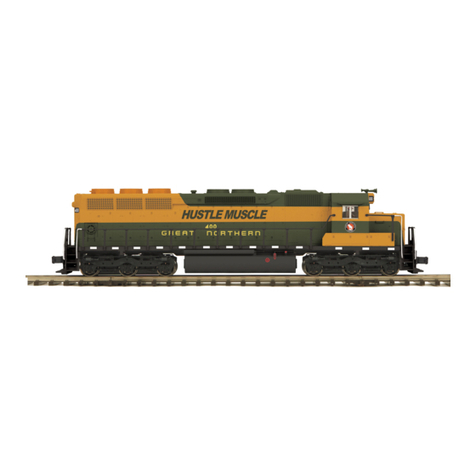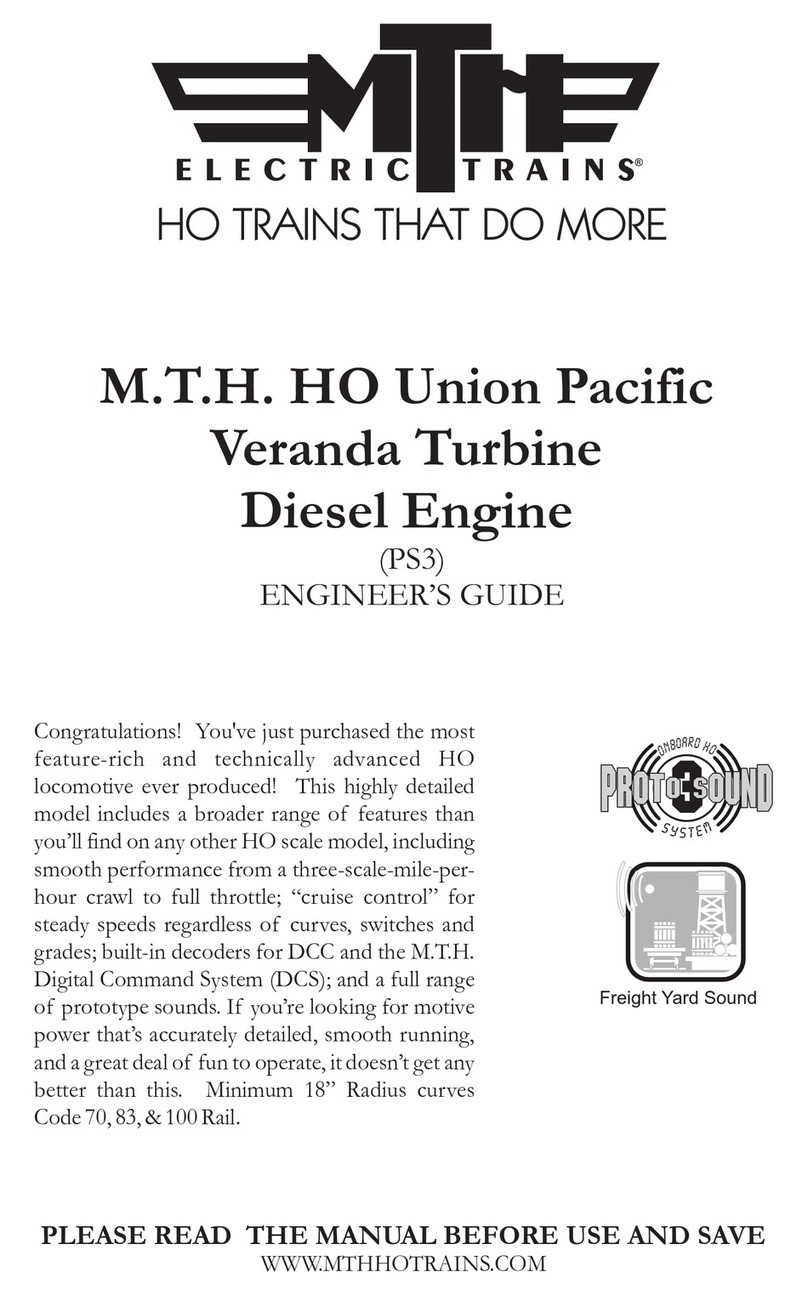
M.T.H. HO 2-6-6-6 Allegheny Steam Engine
2
This product may be protected by one or more of the following patents: 6,019,289; 6,280,278;
6,281,606; 6,291,263; 6,457,681; 6,491,263; 6,604,641; 6,619,594; 6,624,537; 6,655,640.
©2014, M.T.H. Electric Trains®, Columbia, MD 21046
CAUTION: ELECTRICALLY OPERATED PRODUCT:
WARNING: When using electrical products, basic safety precautions should be observed, including the following:
Read this manual thoroughly before using this device.
lM.T.H. recommends that all users and persons supervising use examine the hobby transformer and other electronic equipment
periodically for conditions that may result in the risk of fire, electric shock, or injury to persons, such as damage to the primary cord, plug
blades, housing, output jacks or other parts. In the event such conditions exist, the train set should not be used until properly repaired.
lDo not operate your layout unattended. Obstructed accessories or stalled trains may overheat, resulting in damage to your layout.
lThis train set is intended for indoor use. Do not use if water is present. Serious injury or fatality may result.
lDo not operate the hobby transformer with damaged cord, plug, switches, buttons or case.
Recommended for Ages 14 and up. Not recommended for children under 14 years of age without adult supervision.
As with all electric products, precautions should be observed during handling and use to prevent electric shock.
Rev.: 80st18070i_2-6-6-6 Allegheny Ps3 12/9/14
TABLE OF CONTENTS
Unpacking Your Engine.................................................................................4
Product Overview.............................................................................................................5
Getting to Know Your Engine ..................................................................................................5
Engine Diagram ...........................................................................................................................7
Set-up/Maintenence.................................................................................................7
Installing Mechanical Couplers..................................................................................................8
Smoke Unit Preparation and Use..............................................................................................9
Removal/Installation of Drive Wheels....................................................................................9
Lubrication..................................................................................................................................11
Features and Operation..........................................................................................12
Modes of Operation .................................................................................................................12
Analog DC (standard DC power pack)..................................................................................13
Volume Control .........................................................................................................................14
Smoke Control ...........................................................................................................................14
DCC Digital Command Control............................................................................................16
Start-Up/Shut-Down................................................................................................................16
Sounds .........................................................................................................................................16
PFA ..............................................................................................................................................17
Lights ...........................................................................................................................................17
Forward/Reverse Signal............................................................................................................18
Engine Sounds ...........................................................................................................................19
F Function List...........................................................................................................................21
DCS Digital Command System..............................................................................................22
Proto-Sound® 3.0 Expanded DCC Functionality......................................................24
Configuration Variables ............................................................................................................24
Cv29.............................................................................................................................................25
Feature/Factory Reset .............................................................................................................26
CV Programming.......................................................................................................................27
Advanced Consisting.................................................................................................................30
Programming Track...................................................................................................................34
Specifications ...........................................................................................................35
Recommended Transformers ..................................................................................................36
Troubleshooting Guide .................................................................................37
Service and Warranty Information.......................................................................43
Limited One-Year Warranty.....................................................................................................43
Engine and Tender Connection ................................................................................................7



